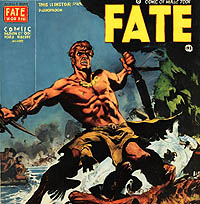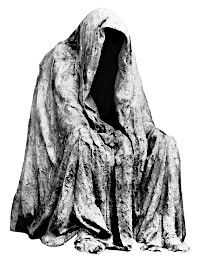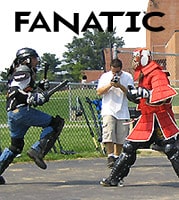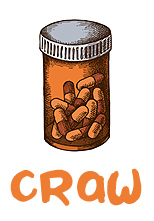Bare-knuckle boxers of the 1800s had more similarities to traditional karate fighters of the 1970s than to modern boxers. Primarily this was a lack of combination punching and the fact that striking the body was regarded as more important than striking the head. These were, in part, realistic self-imposed limitations considering the lack of hand gear. There was another reason that the old timers did not learn combination punching as the ancient Greeks had; because the concept of the punching bag as a training apparatus was unknown.
One man changed that, and became known as ‘The Professor’ of boxing trainers. Here is his story, and his legacy.
Background
Mike O’Donovan was born in Chicago in 1847. Mike enlisted in a Union regiment and fought under William Tecumseh Sherman; participating in the infamous burning of Atlanta and the march through Georgia.
At some point before he began his prize-fighting career he dropped the O from his name. This practice of ‘anglicizing’ their ancestral name, or of just taking up an American sounding name, was common among Irish, Italian and Jewish fighters up through the 1920s. During the early portion of his career Mike earned a living between bouts as a ship caulker. He would go on to own a saloon, a liquor store; often gave boxing instruction; and served as a star entertainer, putting on boxing exhibitions in saloons.
Fighting Life
Mike travelled to New Orleans after the war and trained under veteran boxer Frank Kendrick. New Orleans had been a center for dueling for over a hundred years, and would remain a major boxing venue until the late 1800s. At some point early in his career his brother Jack became his manager.
Mike listed as 5-8 or 5-9 in height and weighed in between 148 and 164 pounds over the course of his lengthy career, spanning from 1866 thru 1900.
Trying to list a record for a fighter of Mike’s era is difficult. Part of the problem is due to the illegal status of many of the formal bouts and the informal status of some others. There are then the exhibition bouts, which were sometimes fights, and sometimes just public sparring. Fighters might declare that they were merely boxing an exhibition to avoid legal hassles. For a fighter of the transitional era, who fought bare-knuckle, with driving gloves, and with boxing gloves, according to London Prize Ring, American Fair Play and Marquis of Queensbury rules, exhibitions before 1890 were sometimes fights, but afterward just sparring. With this stipulation I shall offer a possible record below, with the exhibitions that may have been actual fights listed separate from the obvious public sparring displays.
Record
Total Bouts: 48
Sparring Exhibitions: 48 [these were done to build interest for actual bouts]
Wins: 28 [2 by KO, 11 by TKO]
Losses: 2 [1 by KO, 1 by foul]
Draws: 8
No Decisions: 5
‘Exhibitions’: 5 [The first John L. Sullivan exhibition was definitely a nasty fight.]
Highlights
Chicago, June 8 1866, lost to Crowley Davis of Pittsburgh on foul after 59 rounds [He liked to do a spinning elbow.]
St. Louis, June 22 1866, TKO’d Mike Conroy in the 62nd round
Cheyenne, Wyoming, July 4 1868, won a 10-round fight refereed by Wyatt Earp
Philadelphia, 1873, fought a brutal 44 round draw with Jimmy Murray [Note the poor record keeping in the East where fighting was generally illegal.]
Troy, NY, 1877, while prepping for a fight with the aid of a soccer ball, Mike invented the punching bag.
New York, April 6 1878, lost on a foul to William C. McClellan
New York, May 18 1878, McClellan refused to continue after being fouled and was disqualified. [We know Will, those elbows hurt.]
Virginia City, NV, Mike takes a break from beating up his fellow Irishmen and thrashes his first Italian, Billy Costello, whose given name was certainly not ‘Billy’.
Nevada/California, 1879, Mike was working out West as a trainer, and pummeling locals, having earned a reputation as one of the best corner men. His opponents were generally much larger, which added greatly to his renown.
San Francisco, 1879, fights a 94 or 96 round draw with McClellan at the Olympia Club, the main fight venue of the day west of the Mississippi, like Madison Square Garden in the 1950s.
New York, October 17 1884, after doing exhibitions and minor bouts for a few years Mike defeats the younger and larger Walter Watson after 7 rounds for the position of Boxing Instructor at the New York Athletic Club. We don’t get to see this kind of thing anymore!
New York, September 1886, Donovan, now a [current or recent] liquor store owner, was fined for refusing to answer questions during a court trial
New York, October 1886, during a barroom fight with a certain Pug McCarthy, Donovan ‘shoved’ Pug to the floor, who died of a broken neck. [Sounds like another foul to me Mike.] Mike was released after a coroner’s inquest.
Brooklyn, 1888, Mike worked over the original Jack Dempsey for 6 rounds and it was declared a draw. One report says it was broken up by the police, who were, let’s remember, a bunch of corrupt Irish cops who may well have had betting interests in the fight.
Richburg, MS, Mike cornered for Jake Kilrain against John L. Sullivan, in his losing 75-round bid to take the world heavyweight title. This was the last heavyweight title fight fought under LPR rules.
New York, July 23 1892, while preparing James J. Corbett for his upcoming bout with John L. Sullivan, Mike fought Jack Slavin, another boxer, to a draw in the street. Donovan denied that he was involved.
Birmingham, England, September 3, 1897, Working primarily as a sparring partner and trainer for big name heavyweights, Mike ended his career by journeying to England and fighting the great Jem Mace to a 6-round draw, at age 50.
Coaching Life
Film still exists of Donovan giving sparring exhibitions. Some can be seen in Unforgivable Blackness, a documentary by Ken Burns, reviewed on this site.
While still an active fighter Donovan was organizing tournaments, working as a corner man, and a coach. He wrote a very good training manual in 1893, in which he describes his invention of the punching bag. Ten years after he had developed the original ‘flying bag’ it had evolved into a 20 pound heavy bag, and the double-ended bag. Before his retirement it had also evolved into the speed-bag. Within his career, Mike was responsible for the development of most of the striking apparatus currently in use by us modern knuckleheads in the boxing and MMA gyms of the 21st Century.
Mike was a good friend of sparring partner, war hero, explorer, Governor of New York, and President Theodore Roosevelt. They actually sparred in the White House when Mike was about 60! Mike was instrumental in promoting physical fitness initiatives for youth and the military all the way up to the month of his death in March 1918; having contracted pneumonia while giving lessons to military recruits at age 70.
Mike Donovan seems to this author to have been one of those irrepressible ‘martial spirits’ that pop up throughout history. I think, that whatever time he would have been born to, Mike would have been a fighter of some sort. He is literally the father of the modern boxing gym, and earned the nickname ‘Professor’ while still an active fighter. Below is a quote, the last line from his hundred-plus year-old book, that I have posted in more than one gym, and bears reading by any aspiring fighter, “Six weeks of honest training should make a thoroughly sound man fit to fight for his life: no other should enter the prize ring.”
Legacy
Mike Donovan laid the groundwork for modern boxing, later brought to perfection by the black school of boxers under Jack Blackburn. He was the pioneer of combination punching and evasive footwork.
Mike’s son, Aurthur Donovan, is a Hall of Fame referee, who handled title fights of the 1950s and 1960s.
Mike’s grandson, Art, is a famous Baltimore area sports icon and member of the Football Hall of Fame in Canton, Ohio.
An Odd Echo
Art Donovan has, since my childhood, been a lovable local celebrity; a former Baltimore Colts great; kind of like our own John Madden. I was recently speaking about his famous grandfather to an old karate instructor as we discussed the origin of the punching bag while hanging a speed bag. This man then related to me a curious tale, from decades ago. Apparently, he had been a member of a band that played at a night club owned by Art Donovan. When it came time to settle up for the night there was a dispute between the band and the owner. This devolved until the point that this bare-knuckle karate fighter and the grandson of a former bare-knuckle fighter of a long lost age nearly slugged it out.
Cooler heads prevailed. Somewhere though, the ghost of Mike Donovan surely stirred.











Although i am not a boxer,i own mike donovan's 'science of boxing'.What a great little book.I was excited when i read in the training section,that the old timers build their 'wind' primarly by walking at a brisk pace,with a genuine 'heel to toe'style.Then i was devastated when i discover that after fifteen minutes of walking briskly,i had pain in my knee the next day.If i could achieve the stamina and fitness of the 'iron men' of old by walking,i would walk every minute of my spare time(if i didn't feel pain of course).Also professor Donovan says that the best exercise for the boxer even more than sparring,is to to practice on the punching ball,so he can become a two handed puncher.I ain't no boxer,ijust admire the simplicity of all this advice to prepare for a fight.truly inspirational.Thank you mr La Fond for reminding me of professor donovan and the ways of the old timers.
The type of brisk walking Mike Donovan was talking about was a stiff-legged pedestrianism which was a competition event and is hard on the knees, especially if you have hyper extension issues. Try varying your gait—perhaps using shorter steps, maybe using a Velcro knee brace. Be sure to brace both knees even if one is fine. Also shadow boxing—the footwork part especially—will help your wind a lot and is less dangerous than anything. In Mike's day 'pushing' training could result in an injury that would be fixed by a minor operation today. But that was before such options, so one was careful. The poor and uninsured like myself take note.
I put up your man question which was very much appreciated. I should have covered that years ago.
Thank you mr La Fond.Yesterday, after your suggestions,i did a little shadowfighting.I know how good it can be for developing your 'wind',however i am sure that i am making a lot of mistakes and i will develop bad habits.I believe that correct shadowfighting should be a guided process and not some random improvisation(at least this is what i feel that i'm doing).If you could direct my attention to any viewing material(yOU TUBE,TAPES,DVDs)that you approve,it would be much appreciated.{sidenote,I would love to see you demonstrating skills,tactics and techniques inDVDs even if you dont look like jason statham}MANY THANKS AGAIN
Jason Van Veldhuysen is the best online boxing coach. He has over 100 free videos. There is a link to his Precision Striking site on our network page.
I suggest you give him a try.
Good luck.